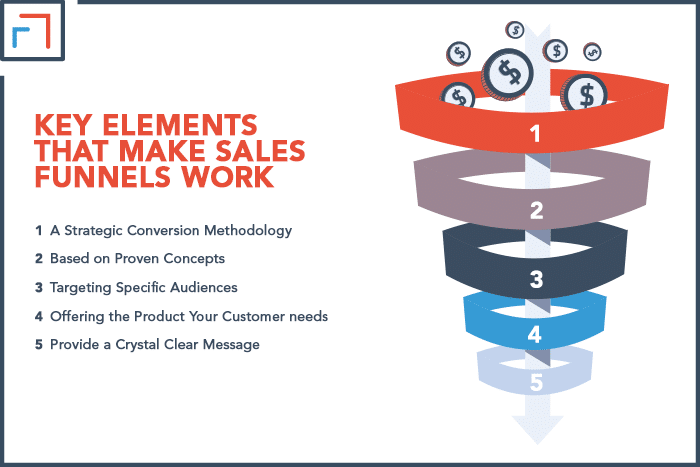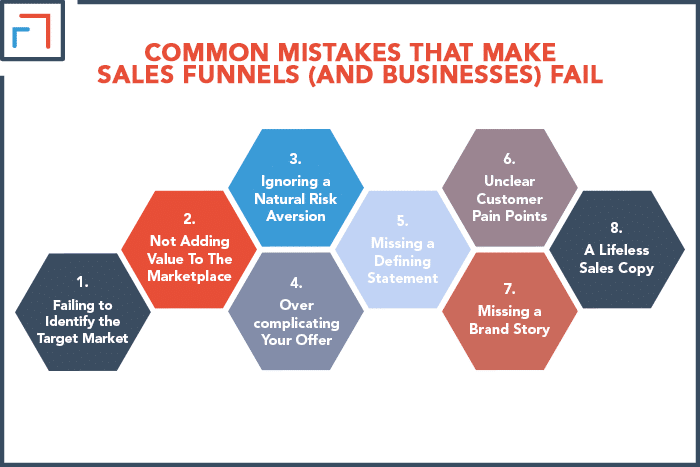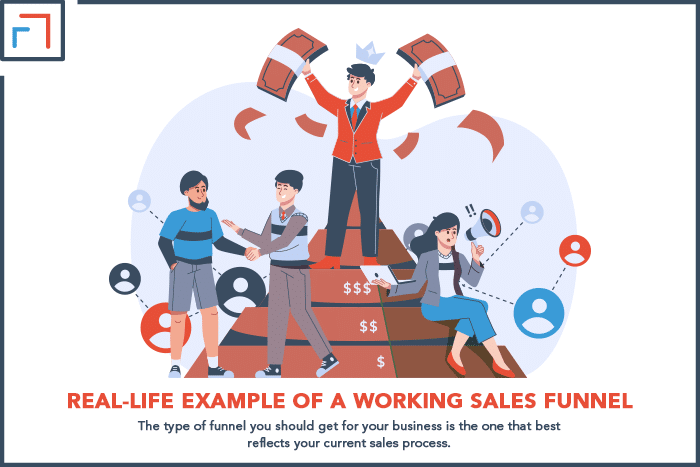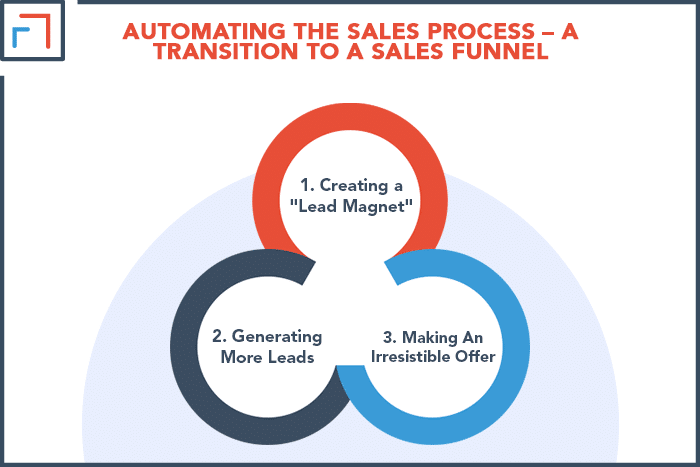Some business owners want to build a sales funnel for their company but are unsure if this strategy will work for them. It’s normal to question whether or not sales funnels actually work.
Sales funnels work because they allow businesses to attract new people, educate them about their products, make offers, and follow up to maintain the relationship. However, sales funnels can fail due to unclear offers, a poorly-defined customer base, and not knowing the customers’ pain points.
Let’s explore why sales funnels get results, what makes them effective, and how any business can benefit from a sales funnel. We also have real-life examples to demonstrate how sales funnels can succeed and why some of them might fail.
Key Elements That Make Sales Funnels Work
1. A Strategic Conversion Methodology
Sales funnels work by educating prospective buyers about your product or service and turning them into loyal customers.
I’ve also covered this in more detail in my article on the working methodology of a sales funnel.
It is called a funnel because a few more people will drop out at every level (this is just the nature of the sales world).
However, those who continue progressing will get closer to becoming customers and repeat buyers.
There are numerous kinds of sales funnels, and they work in slightly different ways.
This means that different funnels should be used for different situations, but they all follow the same basic marketing principles.
Sales funnels are versatile tools that can be strategically adjusted to fit the demands of any business.
2. Based on Proven Concepts
Sales funnels have been getting results long before the internet took off.
In the past, direct marketers built “offline sales funnels” to sell their products and services successfully.
While the concept of sales funnels was popularized by software such as ClickFunnels, we must acknowledge that a sales funnel is not necessarily a series of pages on a website.
Before the age of Email, Facebook, or Google Ads, marketers used direct mail or classified ads to bring people into their sales funnel. This was their traffic source.
People then would see these ads and reply to their mail by ordering a free copy of a report or guide. This is how businesses then got a lead.
Next, the direct marketer would use their copywriting skills to write a sales letter that was designed to sell their information or products.
This letter would be included in the “free report” the lead ordered.
Lastly, after the lead made an order, they would send the info-product by mail in the form of DVDs or other media. Does that format ring a bell?
As you can see, sales funnels are a tried and true concept that direct marketers have been using for years.
Once the internet and social media became popular, small business owners got a new opportunity to attract new customers and expand their reach.
3. Targeting Specific Audiences
Sales funnels are an effective marketing tool, but they are not magical.
Without the right marketing strategy in place, a sales funnel alone is incapable of converting strangers into paying customers.
Business owners often make the mistake of thinking their target market is “anyone who wants what I sell.”
Unfortunately, this mindset can lead to a broken funnel and a failing business.
While targeting large groups of people is now possible thanks to the rise of social media platforms and online advertising, the purpose of your sales funnel is to filter these people and locate the specific prospects you want.
You cannot achieve this goal unless you have a specific market and customer avatar in mind.
Your market will be the foundation on which you’ll build your offer, message, and sales funnel.
So you must be specific about who you’re targeting, what they want, and how your product or service helps them.
If you can do this, your funnel is much more likely to work as planned.
4. Offering the Product Your Customer NEEDS
It’s easy to think sales funnels are all about designing a sequence of beautiful sales pages with stunning images of your products.
While a good design is pleasant to the customer’s eye, it won’t be enough to generate sales and bring new customers to your business.
You need to provide real value and fill the needs of your audience. If your customer has:
- A persistent problem
- The urgency to achieve a goal
- The urgency to fulfill a need
Then an offer aimed to solve any or all three of these issues will help shape your funnel and set it up for success.
5. Provide a Crystal Clear Message
In a world as loud and competitive as we live in, people get hundreds to thousands of marketing messages every day.
Given that your marketing message is the bridge that connects your offer with the customer, your message must stand out from the noise.
A sales funnel can’t do wonders for your business if your message is too broad, unfocused, or generic.
For a much more detailed view on what can a sales funnel do (and what it can’t), do check out my article on the capabilities and limitations of a sales funnel.
The best sales funnels are built on specific, laser-targeted messages that have been crafted to appeal to your market’s emotions.
If the message is right, it will evoke the irresistible itch to purchase.
As a prospect passes through each stage of the funnel, it signifies a deeper commitment to the purchase goal.

Common Mistakes That Make Sales Funnels (and Businesses) Fail
1. Failing to Identify the Target Market
Take a close look at your current list of clients and ask yourself:
- What do these people have in common?
- Why do they buy from me?
- How do they talk about their problem or need?
- Do they share similar demographics (age, gender, occupations, location)?
- Do they share similar psychographics (personality traits, lifestyle)?
The answers to these questions will help you find the perfect target market for your sales funnel. But don’t just guess!
Talking to your customers is an incredible way to get a feel for your market.
An excellent way to do this is by offering them a special discount or perk in exchange for answering a survey.
2. Not Adding Value To The Marketplace
“Adding Value” can be quite an abstract concept, especially if you sell intangible products. You can think about it this way:
If your product or service delivers outstanding results in the shortest time and with the least amount of effort on the client’s side, then taking your offer becomes a no-brainer.
Delivering a different and better offer than your competitors is crucial. If your customers can get a better deal somewhere else, they’ll do that.
Your product needs to be valuable enough to stand out from the competition.
3. Ignoring a Natural Risk Aversion
On the other hand, offers that seem “too good to be true” might make people doubt their legitimacy.
This is normal, especially if they haven’t bought from you before. Scams abound on the internet, so it’s natural for customers to be cautious.
Adding a guarantee to your offer will help alleviate any fears they might have and show them you’re not selling snake oil.
Depending on your product or service, this guarantee could be a “Full Satisfaction Money Back Guarantee” or a “Results In Advance Guarantee.”
4. Overcomplicating Your Offer
An important marketing concept to remember is that a confused customer will never buy from you.
You can have the most valuable offer in your industry; you can offer the best bonuses, guarantees, pricing, and payment plans.
But if you can’t communicate your offer clearly without confusing your prospect, your funnel won’t work.
So make sure it’s clear and delivered in an easily-understood way.
5. Missing a Defining Statement
A defining statement is a sentence that states what makes your offer superior to all the other ones in your market.
It should answer who, what, why, where, when, and how. It should also be able to call out the identity of your target audience quickly.
But, most importantly, it needs to communicate how your offer will help.
6. Unclear Customer Pain Points
You can’t build a successful sales funnel if your message doesn’t speak directly to your prospect’s pain point.
On a psychological level, that pain point is what makes your offer valuable to them.
However, simply identifying the problem is not enough; you should be able to express it more clearly than they have ever been able to do so themselves.
This will create a level of trust in your prospect’s mind. If you’re lucky, this trust is something they haven’t been able to find from any other business/offer.
You can accomplish this by identifying the emotions attached to their problem and addressing these feelings in your sales messages.
7. Missing a Brand Story
A brand story is a narrative that explains to your audience how you could solve the problem you’re about to address.
Your brand story should explain who you are, the journey that got you here, and how your product or service can help them relieve their pain.
This is how you get to address your prospect’s emotions and help them relate to you. It also helps them understand what makes your business worthwhile.
Attaching a story to your business adds a human element that customers will be drawn to.
8. A Lifeless Sales Copy
Your sales copy is what helps you communicate your sales story to your audience.
These are the actual words that you will use to introduce your offer, describe the benefits, and ultimately get them to close the deal.
When you’re creating sales copy, you have to carefully craft your words so that they can speak directly to your audience’s hearts and minds.
A bland or robotic sales copy may deliver the message, but it won’t connect with prospects on a deeper level.
Remember to balance information with emotion as you write.

Real-life Example of a WORKING Sales Funnel
The type of funnel you should get for your business is the one that best reflects your current sales process.
Most business owners might not realize it, but if their business is making sales, they already have some type of sales funnel in place, even if it’s not an official one.
- Every business needs to have something to sell; this is their offer.
- Every business needs to find groups of people who need what they sell; this is a market.
- A conversation needs to happen before any transaction occurs; this is the message.
In one of my articles, I’ve shown how every business needs a sales funnel.
Here is an example of how to hypercharge a sales process with a sales funnel:
A woman I know has a vegetable milk business.
Her product has about 3 or 4 times more nuts than commercial brands, which significantly enriches its taste.
In addition, her product doesn’t contain any artificial ingredients, and it gets delivered right to the customer’s door every week.
We will first analyze the three main components behind her business, then explain how she could build a sales funnel to sell this vegan milk.
If you, too, are into selling physical products, then my guide on sales funnel for physical products would prove to be a handy read!
1. The Market
Because she is selling vegetable milk, her market will be primarily vegans or people with dairy allergies.
Her market is likely to be dissatisfied with the options available in supermarkets.
This is a problem for them because they want an alternative to animal milk and feel restricted in their choices.
2. The Offer
Her offer is superior to the competition in many ways:
- The product is different and better than most commercial options
- There’s a minimal financial risk on the customer’s side
- The customer has access to easy delivery
- The product is easy to explain
3. The Message
The specifics of her brand story aren’t relevant to this article, but remember that I used a defining statement to explain her business.
Adding a human element into the messaging makes the product/business more relatable and appealing.
4. The Sales Process
This woman sells her milk at a farmer’s market during the weekends. She makes sales in-person but has an online delivery process as well.
Her off-line sales process:
- She has found a place where potential customers visit frequently.
- She offers free samples of her vegetable milk to people walking by.
- When a potential customer approaches her for a free sample, she delivers a quick product presentation.
- If the prospect likes the milk, they buy one or two bottles on the spot and provide their contact information.
- Because she has a good offer, most people become repeat buyers as soon as she follows up.
Her online sales process:
- She has an Instagram account for her product with around 1.5k followers.
- She constantly posts pictures, stories, and reels about her product.
- The social media algorithm sends this content to her audience as well as some potential buyers.
- Some people will reach out via Direct Messages.
- She provides a catalog with her product.
- If the customer is interested, they make an order.
As you can see, we have two different sales processes (online and off-line) for the same product.
Let’s explore how this woman could exponentially increase her results by transitioning to an online sales funnel.

Automating the Sales Process – A Transition to a Sales Funnel
Because we want to reach new prospects, we will ignore her current Instagram audience.
If she stuck with that format, she would have to use Instagram Ads to find people in her market.
Now, unlike at the farmer’s market, offering free products online is not the most efficient way to find leads as it would cheapen her brand and increase her fulfillment costs.
In this case, what can we use as the hook?
1. Creating a “Lead Magnet”
To begin, let’s think about her market.
If these people need an alternative to commercial vegetable milk, they would likely be interested in a free report (PDF) about the benefits of vegetable milk and how to make it at home.
Some people might argue this is giving away the “secret formula,” but in reality, most people don’t want to do this much work themselves.
(There are already thousands of YouTube tutorials that show you how, so the information isn’t secret anyway).
2. Generating More Leads
People exchange their contact information to get this report, transforming them into leads.
At this point, they would receive a report that highlights her product and its benefits. It also delivers value by showing them how they can do it themselves.
3. Making An Irresistible Offer
At the end of the report, there might be an offer with a first-time discount to encourage them to try her product.
Some people will seize this offer, while those who don’t will be added to an automated follow-up sequence. Just like that, a sales funnel is now in place.
All she has to do now is spend a few dollars on Instagram to help her target the right audience.
As the funnel begins to convert customers for a lower price than the advertising costs, she can increase her spending on ads as needed.

Sales Funnels Aren’t Magic Pills…
Many people think that sales funnels are a magic tool that will solve all of their sales problems. This couldn’t be farther from the truth.
Sales funnels work when your sales process works, and you have the right marketing strategy in place.
The difference is that normal sales processes require human labor to create customers and sales, while sales funnels make this process automatic and efficient.
